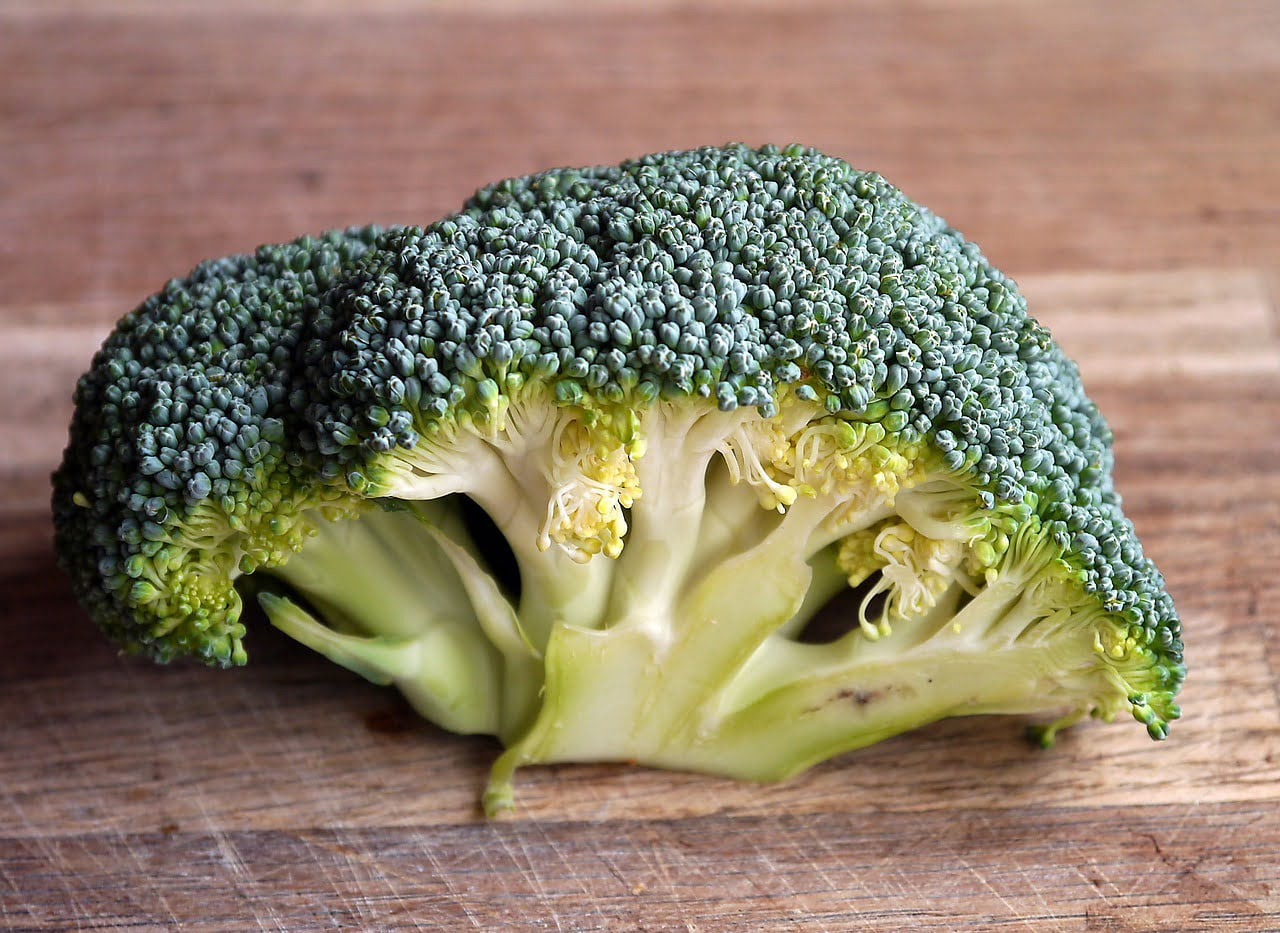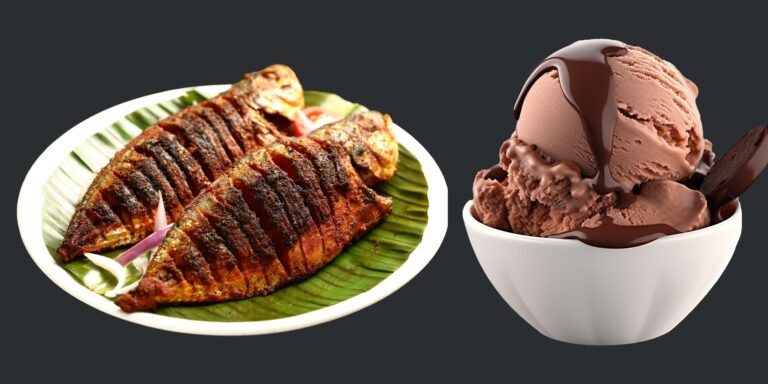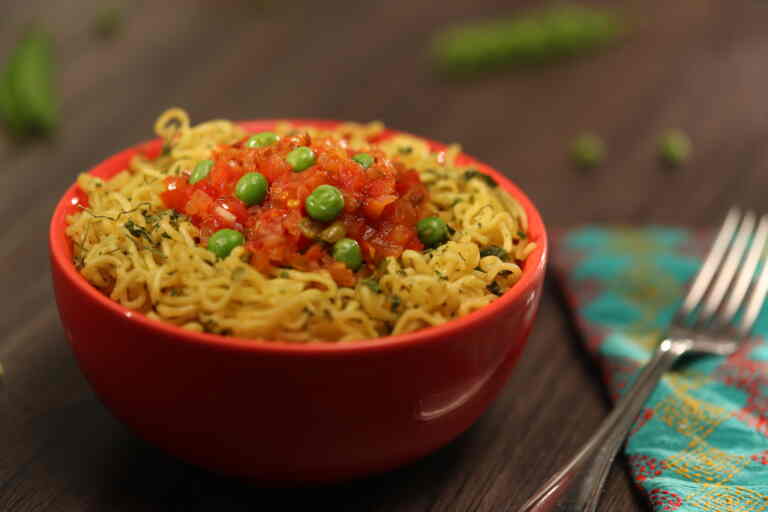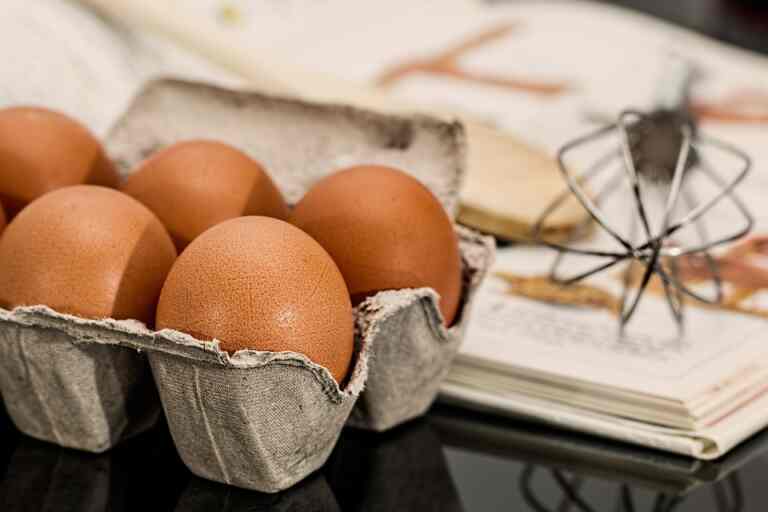Can we eat broccoli stems?
Can we eat broccoli stems? Yes, broccoli stems are edible and can be eaten. In fact, they are often overlooked but can be a tasty and nutritious part of the broccoli plant. Broccoli stems have a slightly different texture and flavor compared to the florets, but they are perfectly safe to eat and can be delicious when prepared properly.
They are rich in fiber and provide additional nutritional benefits to your diet. To enjoy broccoli stems, you can peel off the tough outer layer, slice or dice them, and use them in various recipes like stir-fries, soups, salads, or even as a crunchy snack with a dip.
Nutritional Value of Broccoli Stems
The nutritional value of broccoli stems is often underestimated, but they offer a variety of essential nutrients and health benefits. Here is an overview of the nutritional content of broccoli stems:
- Fiber: Broccoli stems are a good source of dietary fiber. Fiber aids in digestion, helps maintain a healthy weight, and may lower the risk of certain diseases.
- Vitamins: Broccoli stems contain essential vitamins such as vitamin C, vitamin K, and various B vitamins like B6 and folate. Vitamin C is known for its immune-boosting properties, while vitamin K is vital for blood clotting and bone health.
- Minerals: They also provide minerals like potassium and magnesium, which are important for heart health and muscle function.
- Antioxidants: Broccoli stems contain antioxidants like sulforaphane, which has been linked to potential cancer-fighting properties. These antioxidants help protect cells from damage caused by free radicals.
- Phytonutrients: Broccoli stems contain phytonutrients like glucosinolates, which have anti-inflammatory and detoxifying effects on the body.
- Low in Calories: Broccoli stems are relatively low in calories, making them a healthy addition to a balanced diet, particularly for those looking to manage their weight.
- Hydration: They have a high water content, which can contribute to hydration and overall health.
- Digestive Health: The fiber in broccoli stems promotes healthy digestion and may help prevent constipation.
In summary, broccoli stems are a nutritious and versatile part of the broccoli plant. They offer a range of vitamins, minerals, and health-promoting compounds that can benefit your overall well-being when incorporated into your diet.
Cooking and Preparing Broccoli Stems
Cooking and preparing broccoli stems can be a rewarding culinary experience. Here’s a step-by-step guide on how to cook and make the most of broccoli stems:
1. Selecting Broccoli Stems:
- Choose broccoli with firm, crisp stems.
- Look for stems that are free from blemishes or bruises.
2. Washing and Cleaning:
- Rinse the broccoli stems thoroughly under cold running water to remove any dirt or debris.
3. Peeling:
- The tough outer layer of broccoli stems can be fibrous, so it’s a good idea to peel it.
- Use a vegetable peeler or a knife to remove the outer skin until you reach the tender, pale green or white inner flesh.
4. Trimming:
- Trim off any dry or woody ends of the stems.
5. Slicing or Dicing:
- Once peeled and trimmed, you can slice the stems into thin rounds or dice them into small pieces, depending on your recipe.
Experiment with different cooking methods and seasonings to find your favorite way to enjoy the unique flavor and texture of broccoli stems. They are a versatile addition to your culinary repertoire and can be a delicious and nutritious part of your meals.
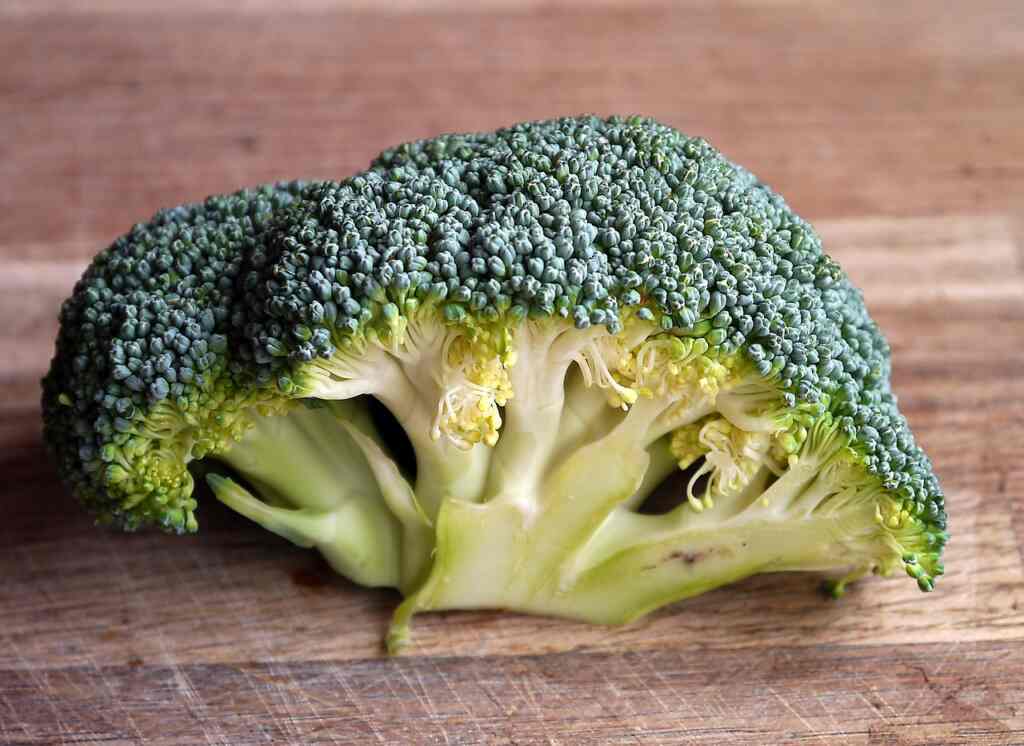
Creative Ways to Use Broccoli Stems in Recipes
Broccoli stems are often overlooked but can be a versatile and delicious addition to various recipes. One creative way to use broccoli stems is by turning them into a creamy and nutritious soup. After peeling and dicing the stems, sauté them with onions and garlic, then add vegetable broth and your choice of seasonings. Simmer until the stems are tender, then blend the mixture into a smooth soup. You can also incorporate sliced or diced broccoli stems into stir-fries, adding a crunchy texture and a mild, slightly sweet flavor to your dish.
Additionally, consider shredding broccoli stems and mixing them with other vegetables to make coleslaw or adding them to your favorite vegetable fritter or pancake recipe for an extra boost of nutrients. These creative uses not only reduce food waste but also enhance the taste and nutritional value of your meals.
Sustainable Eating: Making the Most of Broccoli Stems
In the pursuit of sustainable eating habits, making the most of every part of your ingredients is a crucial step towards reducing food waste. Broccoli stems, often discarded, hold significant potential to contribute to a more sustainable kitchen. These sturdy and nutrient-rich stems can be transformed into delicious dishes while minimizing waste.
One sustainable practice involves utilizing broccoli stems alongside the florets in your recipes. Simply peel and slice the stems into smaller pieces to ensure they cook evenly with the florets. This not only maximizes the edible parts of the vegetable but also adds a delightful variety of textures and flavors to your meals.
Another sustainable approach is to save broccoli stems for homemade vegetable broth. When you have several stems saved up, combine them with other vegetable scraps like onion peels, carrot tops, and celery leaves to create a flavorful and nutritious broth base. This not only reduces the need for store-bought broth but also prevents valuable nutrients from ending up in the trash.
Additionally, consider pickling or fermenting broccoli stems. These preservation methods not only extend their shelf life but also infuse them with tangy, unique flavors. Pickled broccoli stems can be a fantastic addition to salads and sandwiches, while fermented stems offer a probiotic-rich condiment that can elevate various dishes.
Benefits of Including Broccoli Stems in Your Diet
Including broccoli stems in your diet offers a range of health benefits, making them a valuable addition to your meals. Here are some of the key advantages of incorporating broccoli stems:
- Nutrient-Rich: Broccoli stems are packed with essential nutrients, including vitamins, minerals, and antioxidants. They provide vitamins C and K, which are important for immune function, collagen production, and blood clotting, among other functions.
- Fiber Content: Broccoli stems are a good source of dietary fiber. Fiber aids in digestion, promotes feelings of fullness, and supports regular bowel movements. It also contributes to heart health by helping to lower cholesterol levels.
- Low in Calories: Broccoli stems are low in calories, making them a nutritious choice for those looking to manage their weight. You can enjoy their crunch and flavor without worrying about excessive calorie intake.
- Antioxidant Properties: Broccoli stems contain antioxidants like sulforaphane, which has been associated with potential cancer-fighting properties. Antioxidants help protect cells from damage caused by free radicals.
- Blood Pressure Regulation: The potassium content in broccoli stems can contribute to healthy blood pressure levels, as potassium helps balance sodium levels in the body.
- Bone Health: Vitamin K, found in broccoli stems, is essential for bone health and may help reduce the risk of osteoporosis.
- Hydration: Broccoli stems have a high water content, which can contribute to your daily hydration needs.
- Versatility: Broccoli stems can be used in a variety of dishes, adding a unique texture and mild, slightly sweet flavor. Their versatility allows you to enjoy these health benefits in various recipes.
- Reducing Food Waste: Incorporating broccoli stems into your meals is an eco-friendly practice that reduces food waste and promotes sustainability in your kitchen.
- Diverse Culinary Uses: From soups and stir-fries to salads and snacks, broccoli stems can be creatively integrated into a wide range of dishes, making it easier to enjoy their nutritional benefits.
Incorporating broccoli stems into your diet not only contributes to a well-rounded and nutritious meal plan but also supports your overall health and well-being. So, next time you enjoy broccoli, remember to make the most of the stems for a more complete and wholesome dining experience.
Delicious Broccoli Stem Recipes to Try
Certainly! Here are some delicious broccoli stem recipes that you can try:
1. Broccoli Stem Soup:
- Ingredients:
- Broccoli stems, peeled and diced
- Onion, chopped
- Garlic, minced
- Vegetable broth
- Olive oil
- Salt and pepper
- Instructions:
- Sauté onions and garlic in olive oil until soft.
- Add diced broccoli stems and continue to sauté for a few minutes.
- Pour in vegetable broth and simmer until the stems are tender.
- Blend the mixture until smooth, season with salt and pepper, and serve as a creamy soup.
2. Broccoli Stem Slaw:
- Ingredients:
- Broccoli stems, thinly sliced or grated
- Carrots, thinly sliced or grated
- Red onion, thinly sliced
- Mayonnaise or Greek yogurt
- Dijon mustard
- Apple cider vinegar
- Honey
- Salt and pepper
- Instructions:
- Combine the sliced or grated broccoli stems, carrots, and red onion in a bowl.
- In a separate bowl, mix mayonnaise or Greek yogurt, Dijon mustard, apple cider vinegar, honey, salt, and pepper to create the dressing.
- Toss the vegetables with the dressing, and refrigerate for a couple of hours before serving as a refreshing slaw.
3. Broccoli Stem Stir-Fry:
- Ingredients:
- Broccoli stems, thinly sliced
- Bell peppers, thinly sliced
- Garlic, minced
- Ginger, minced
- Soy sauce
- Sesame oil
- Red pepper flakes (optional)
- Rice or noodles
- Instructions:
- Stir-fry sliced broccoli stems and bell peppers in a hot pan with sesame oil.
- Add minced garlic and ginger, and continue to stir-fry until fragrant.
- Pour in soy sauce and red pepper flakes for added flavor.
- Serve the stir-fry over cooked rice or noodles.
4. Pickled Broccoli Stems:
- Ingredients:
- Broccoli stems, thinly sliced
- White vinegar
- Water
- Sugar
- Salt
- Peppercorns
- Dill (optional)
- Instructions:
- Pack sliced broccoli stems into a sterilized jar.
- In a saucepan, combine white vinegar, water, sugar, salt, peppercorns, and dill. Bring to a boil.
- Pour the hot brine over the broccoli stems in the jar.
- Seal the jar and refrigerate for a few days before enjoying the pickled broccoli stems as a tangy snack or salad topping.
These recipes showcase the versatility and deliciousness of broccoli stems while reducing food waste. Get creative in the kitchen and discover how these often overlooked parts of the vegetable can enhance your meals.
Conclusion: Embracing the Versatility of Broccoli Stems
In conclusion, embracing the versatility of broccoli stems not only contributes to more sustainable eating practices but also adds a nutritious and delicious dimension to your culinary repertoire. These often overlooked parts of the broccoli plant are brimming with essential nutrients, including vitamins, minerals, and antioxidants. By peeling, slicing, and incorporating them into various recipes, you can enjoy their mild, slightly sweet flavor and crunchy texture.
Whether you choose to use broccoli stems in soups, slaws, stir-fries, or as pickled snacks, you’re not only reducing food waste but also expanding your palate and improving your overall health. The practice of making the most of every part of this vegetable aligns with sustainable cooking principles and showcases the creativity and resourcefulness of the modern kitchen.
So, next time you purchase or harvest broccoli, remember to cherish both the florets and the stems, for in doing so, you’ll discover a world of culinary possibilities that are as nutritious as they are delectable. Embrace the versatility of broccoli stems and savor the benefits they bring to your plate and the planet.
Related Posts
This article is reviewed by Russel, before publishing. If you have any doubt, you can contact us or consult with your nearby doctor. Remember, in medical matters, there is no same advice, cure, and medicine for all.

